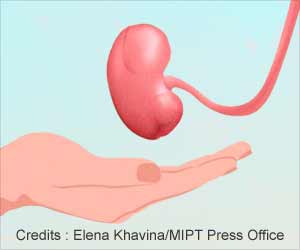A study led by an Indian-origin researcher has explained how an Indian variant of HIV and its counterpart in the U.
A study led by an Indian-origin researcher has explained how an Indian variant of HIV and its counterpart in the U.S. and Western Europe differ in their ability to cause dementia and other neurological complications.
According to some estimates, despite using anti-retroviral drug therapies, up to one-half of people infected with HIV will develop mild to moderate neurological complications.Earlier, scientists observed that people with AIDS in India developed dementia at a far lower rate than comparable populations in the U.S. and Western Europe.
The majority of AIDS cases in India are due to infection with a subtype or clade of HIV, known as clade C, while most cases in the U.S. and Western Europe are due to clade B.
Based on these observations, in 2004, researchers began searching for genetic variations between the two clades that could explain the differing rates of HIV-related dementia.
Focussing their study on Tat, a protein that helps HIV replicate and leads the attack on the brain, scientists compared the sequences of the Tat protein of the two clades and noted a key difference-where the clade B Tat protein contained the amino acid cysteine at a specific position in the Tat protein, the clade C Tat had the amino acid serine.
Then, the researchers compared the two viruses in a single host to determine whether this key change in the amino acid sequence makes a practical difference in HIV's neurotoxicity, for which they injected either clade B or clade C HIV into the brain of a special strain of immunodeficient mice.
Advertisement
It was found that mice infected with clade B performed significantly worse in the maze than those infected with clade C. And when the researchers examined the mouse brains, they found more damage to neurons in the brains of mice injected with clade B than with clade C.
Advertisement
This is the first evidence in an animal model that HIV variants from different parts of the world differ in their ability to cause neurological complications.
Further, test tube studies conducted at Einstein showed strain differences in recruiting inflammatory cells to the brain. Thus, these data now provide biological evidence that Tat protein plays a crucial role in the development of HIV-related dementia.
"Tat seems to be responsible for most of the neurological symptoms seen in patients with HIV-associated dementia," said Prasad.
"Roughly 60 percent of the HIV infections worldwide are due to clade C, but all effective therapies are based on clade B. While our findings specifically address the differences between clade B and clade C with regard to the manifestation of HIV-associated dementia, investigating subtype differences has broad implications for clinical management and treatment for the global AIDS epidemic," said Dr. Vasudev R. Rao, lead author of the study and research associate in microbiology and immunology at Einstein.
The study was published in Journal of Neuroscience.
Source-ANI
SK














